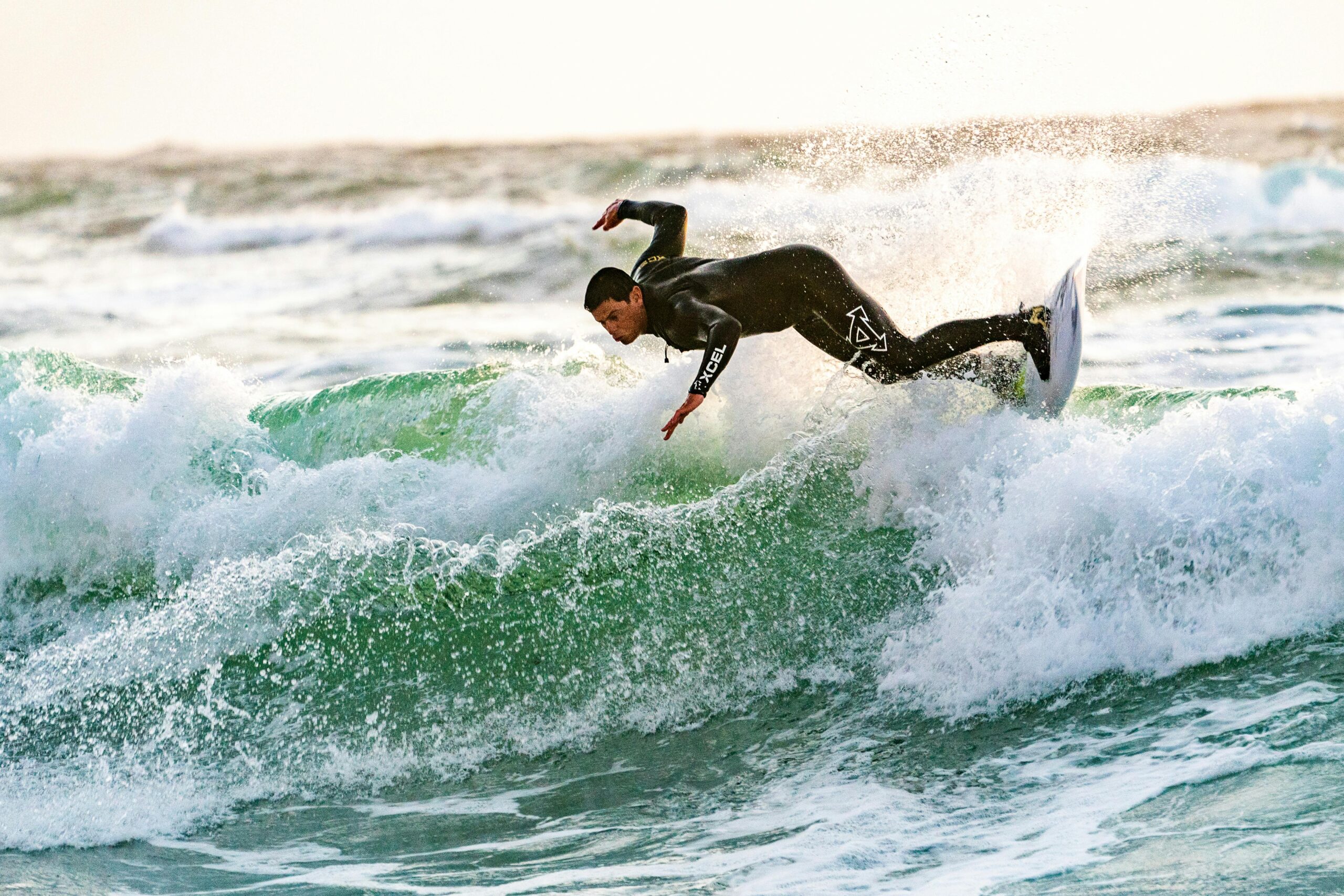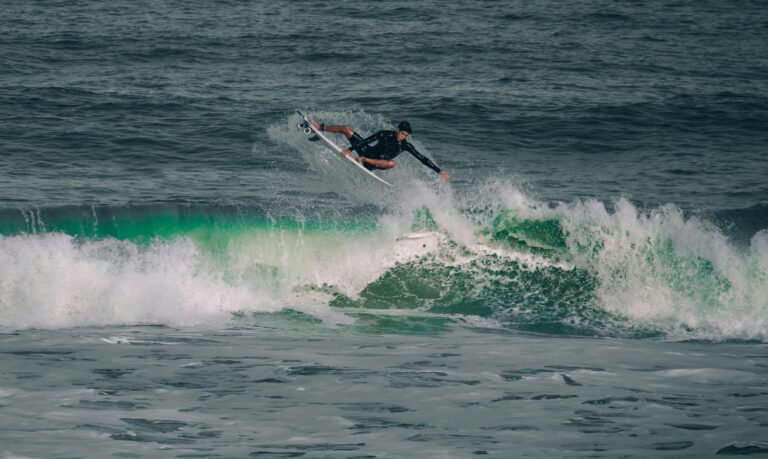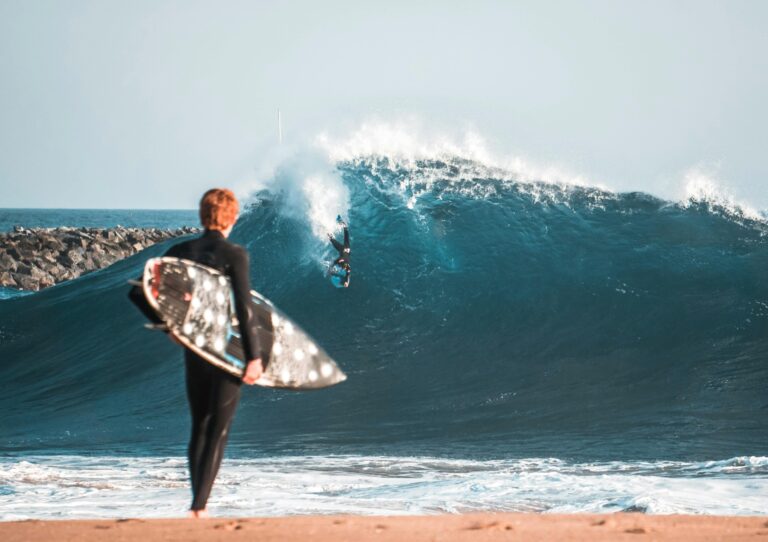Your First Surf Lesson: What to Expect and How to Prepare
Trying surfing for the first time can be both thrilling and a little intimidating. With the right mindset and preparation, your first surf lesson can be an unforgettable and rewarding experience. Whether you’re headed to a sunny beach for vacation or simply checking surfing off your bucket list, here’s what you can expect, and how to prepare.
What to Expect During Your First Surf Lesson
1. Warm Welcome and Orientation
Most lessons begin with a warm introduction from your surf instructor. They’ll brief you on the plan for the session, assess your comfort level in the water, and give you a rundown on safety and basic ocean awareness.
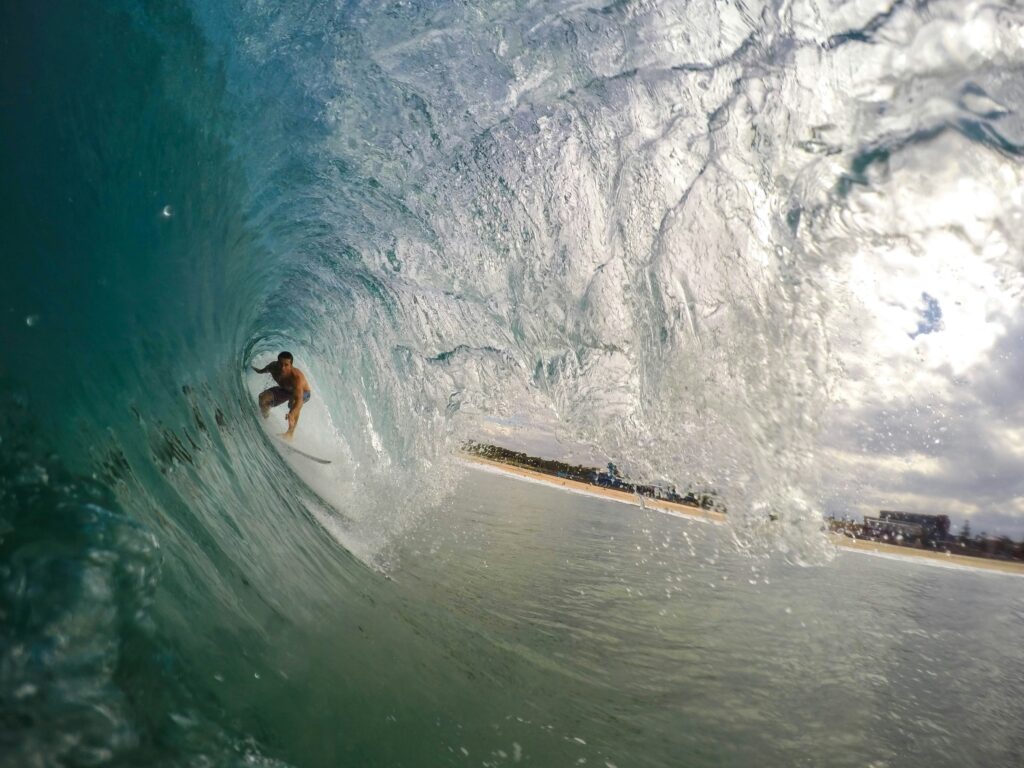
2. On-Land Instruction
Before hitting the waves, you’ll practice on the beach. Your instructor will teach you:
How to position yourself on the board
How to paddle
How to pop up (stand up on the board)
How to fall safely
This dry run is essential, it helps you understand the motions before attempting them in the water.
3. Water Time
Surfing uses muscles in your shoulders, core, and legs that you may not engage often.
Start with light cardio, such as jogging or jumping jacks, to raise your heart rate.
Then move into dynamic stretches to loosen up your body before hitting the water.
After your lesson, do some static stretching to help prevent tightness and soreness.
Warming up and cooling down will improve both your performance and recovery.
4. Practice and Encouragement
Every beginner learns at a different pace when starting to surf.
Some people stand up on the board quickly, while others need more time.
What matters most is staying positive and being kind to yourself.
Falling and trying again is a normal and valuable part of the experience.
Approach the lesson with curiosity and enjoy learning something new.
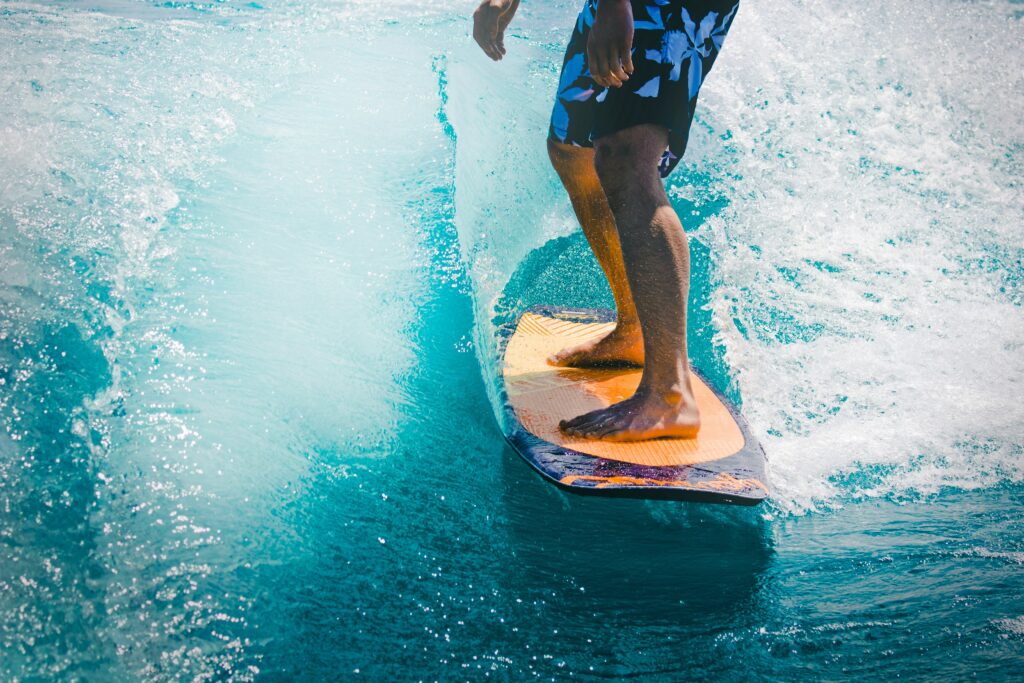
How to Prepare for Your First Surf Lesson
1. Bring the Right Gear
Swimsuit or wetsuit: Depending on the water temperature.
Towel and sunscreen: Waterproof, reef-safe sunscreen is a must.
Water and snacks: You’ll burn energy fast, so stay hydrated and refuel afterward.
Most surf schools provide surfboards and rash guards, but check ahead.
2. Get Comfortable in the Water
You don’t need to be an expert swimmer, but basic water skills are important.
Practice floating, treading water, and swimming short distances with confidence.
Familiarize yourself with how waves move and how to stay calm if you fall off.
Being comfortable in the ocean helps you focus on learning rather than feeling anxious.
The more at ease you are in the water, the more fun and progress you’ll have while surfing.
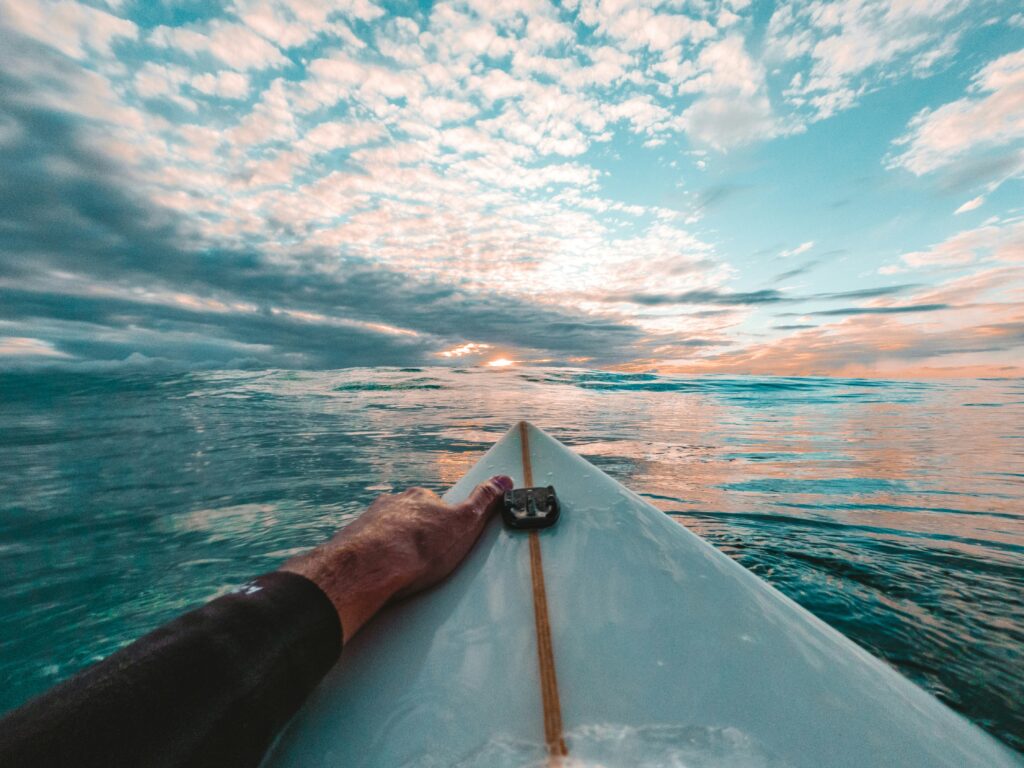
3. Stretch and Warm Up
Surfing uses muscles in your shoulders, core, and legs that you may not engage often.
Start with light cardio, such as jogging or jumping jacks, to raise your heart rate.
Then move into dynamic stretches to loosen up your body before hitting the water.
After your lesson, do some static stretching to help prevent tightness and soreness.
Warming up and cooling down will improve both your performance and recovery.
4. Have an Open Mind
Every beginner learns at a different pace when starting to surf.
Some people stand up on the board quickly, while others need more time.
What matters most is staying positive and being kind to yourself.
Falling and trying again is a normal and valuable part of the experience.
Approach the lesson with curiosity and enjoy learning something new.
Your first surf lesson is about more than just catching waves—it’s an adventure into a whole new world. With a good attitude and a little preparation, you’ll have a blast, learn new skills, and maybe even discover a new passion. So paddle out, smile big, and ride that wave!
